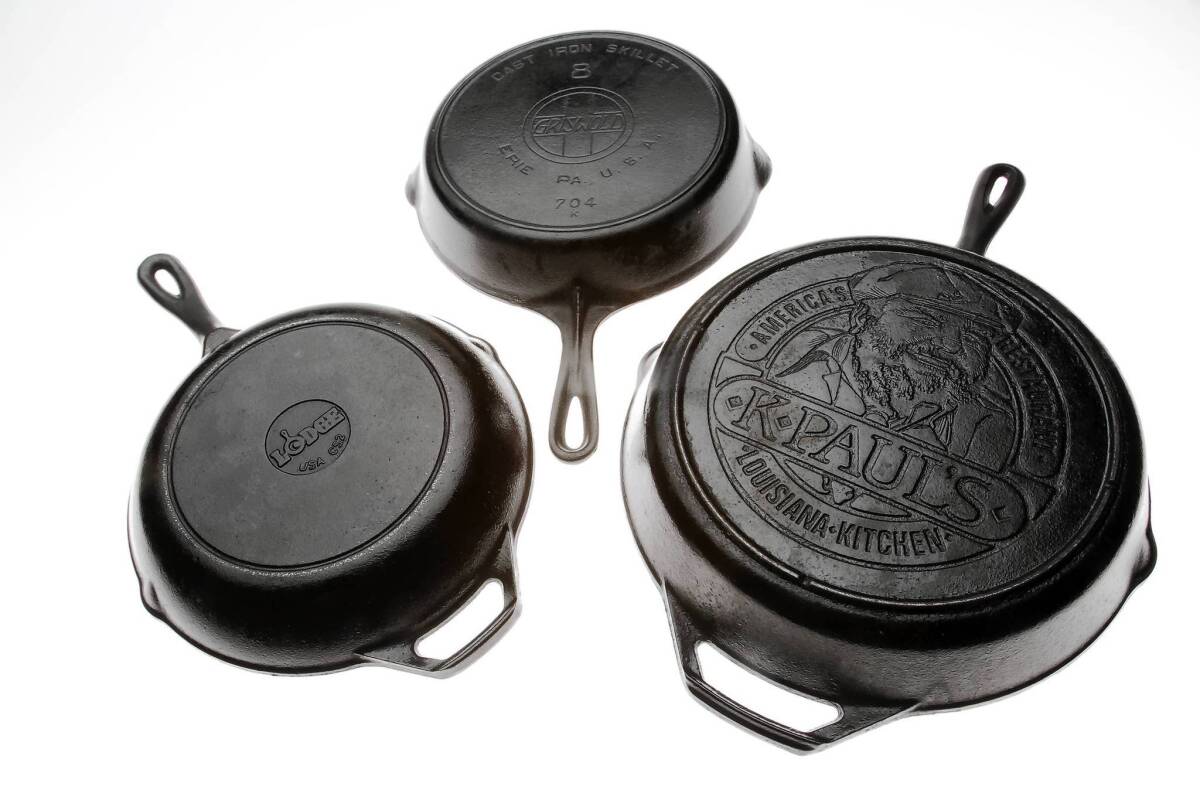Cast iron enjoys a comeback among cooks

- Share via
One of the hottest items on cooks’ holiday lists this year is one of the oldest types of cookware around: cast iron.
But today’s skillets aren’t necessarily the same as your grandmother’s. While you can find antique cookware — and there is a growing market for it — new cast iron is increasingly accessible, both to find (you no longer have to go to a hardware store or camping outlet to buy it) and to use straight off the shelf.
About 10 years ago, Lodge Manufacturing Co. introduced pre-seasoned cookware (and now seasons all of its cookware). It’s seasoned at the foundry using vegetable oil, perfect for any cook new to — and understandably intimidated by the thought of — cooking with and caring for the temperamental metal.
Sales have grown. The last five years have been the best in the company’s history, according to Mark Kelly, public relations and advertising manager for Lodge. Its most popular items are the 101/4-inch and 12-inch skillets. The company, founded in 1896, is the sole remaining major manufacturer of cast-iron cookware in the U.S., though there is heavy competition from foreign manufacturers.
Why is cast iron so big? Well, it easily lends itself to almost any kind of cooking. Cast iron heats evenly, without hot spots, and retains that heat better and longer than other types of cookware. Properly cared for, cast iron can last years — centuries even.
Plus, it’s reasonably priced, especially compared with other cookware.
Cast iron is made by pouring the molten metal into individual sand molds. Once the cookware is cast, it needs to be “seasoned.” Because iron corrodes so easily, a fat — oil, lard or grease — is used to build a protective layer over the metal. Properly applied and heated, the oil hardens over time (“polymerizes”) to form a dense, slick layer on the surface of the iron.
Cast iron is, if you will, the original non-stick pan.
“People are tired of Teflon and all that other stuff,” says David G. Smith. An avid collector and dealer of antique cast iron, he’s known as “the Pan Man” and is coauthor of two bibles on collectible cast iron.
He’s noticed a major resurgence in cast iron, particularly antique and other collectible types — old cookware from manufacturers such as Griswold, Wagner and Lodge. He asserts antique cast iron was first sought after mostly by collectors: Many manufacturers varied the style and logo on pieces over time, making certain hard-to-find pieces and years highly valued — and expensive. Smith related a story about a bread pan that sold at a local auction house a couple of years ago for $87 and later went for more than $25,000 to a high-end collector.
Not all old cast iron is so expensive. According to Doris Mosier, who has been collecting and dealing in antique cast iron for more than 30 years, most of her new customers buy three things: a skillet, griddle and Dutch oven. Prices will vary depending on the style, age and quality of the piece. Mosier says a basic skillet will set you back about $50, a basic griddle $45 to $50, and a Dutch oven $85 and up, depending on the size.
Mosier and her husband, Bob, run the Griswold Cookware website, named after a particularly popular antique brand. She’s noticed the uptick too. Most of her customers are not hard-core collectors but those new to cast iron. Many are from outside the U.S. Antique cast iron claims only a sliver of total sales, but some connoisseurs believe that it’s superior to much of the cookware on the market today.
The difference is in the manufacturing process. Composition and quality of the iron itself can vary by manufacturer. And because the cookware is cast in sand molds, the pieces naturally have a slightly grainy surface. In the past, many manufacturers, including Lodge, would grind and polish each piece after it was cast, removing the top layer of iron, making for a smooth surface.
Many cooks prefer this smooth surface, arguing that grinding actually opens the “pores” of the iron, allowing the seasoning to soak in for a better seal. They feel a rough surface doesn’t season as well.
Others say this is not so. Kelly maintains Lodge no longer grinds its new cookware precisely so the seasoning will have something to stick to — that grinding actually inhibits seasoning.
But if there’s one thing cast iron fans do agree on, it’s that nothing cooks quite like it.
More to Read
Eat your way across L.A.
Get our weekly Tasting Notes newsletter for reviews, news and more.
You may occasionally receive promotional content from the Los Angeles Times.







